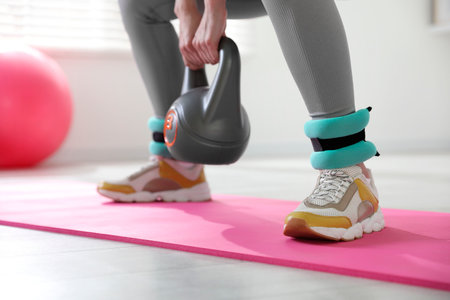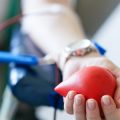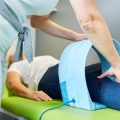Introduction to Rehabilitation Equipment in the UK
Rehabilitation equipment plays a vital role within the UK healthcare landscape, serving as an essential component in supporting patient recovery and ongoing well-being. Whether in bustling NHS hospitals, dedicated rehabilitation centres, or within the familiar environment of community-based care, the right tools are instrumental for empowering individuals on their journey towards independence and improved quality of life. The diversity of rehabilitation equipment available reflects the unique needs of patients across Britain—from mobility aids and exercise devices to advanced assistive technologies tailored for specific conditions. Selecting appropriate equipment is not only a matter of clinical efficacy but also one of promoting dignity, confidence, and holistic care for each person. For practitioners working in various settings across the UK, understanding the landscape of available rehabilitation tools is crucial. This guide aims to provide an accessible overview, helping clinicians make informed decisions that best support their patients’ recovery journeys while aligning with local standards, safety guidelines, and individual preferences.
Commonly Used Rehabilitation Equipment
Within the UK, practitioners often rely on a range of rehabilitation equipment to support individuals with varying needs. Understanding the types of equipment, their common applications, and their unique features is essential for providing effective care tailored to local standards and patient preferences.
Mobility Aids
Mobility aids are frequently prescribed to patients experiencing difficulties with walking or balance. These devices not only help maintain independence but also reduce the risk of falls—an important consideration in both community and hospital settings across the UK.
| Type | Typical Use Case | Key Features for UK Practitioners |
|---|---|---|
| Walking Frames (Zimmer Frames) | Elderly patients post-surgery or with chronic mobility issues | Lightweight aluminium design, rubber ferrules for slip resistance, adjustable height |
| Rollators | Community-dwelling adults needing stability outdoors | Wheeled base, built-in seat, hand brakes, foldable for public transport |
| Walking Sticks and Canes | Mild balance impairment or post-injury rehabilitation | Ergonomic grips, non-slip tips, NHS-compliant sizing |
| Wheelchairs (Manual & Powered) | Long-term mobility limitation or progressive conditions like MS | NHS supply compatibility, customisable support, easy-to-clean materials |
Exercise Therapy Equipment
Rehabilitation frequently involves targeted exercise to restore strength and flexibility. The following tools are widely used in clinics and at home:
- Therabands and Resistance Bands: Versatile for upper and lower limb strengthening; colour-coded for resistance levels commonly referenced in NHS protocols.
- Balance Boards: Support proprioceptive training; often used in falls prevention programmes endorsed by UK physiotherapists.
- Treadmills and Exercise Bikes: Cardiac and pulmonary rehab programmes may utilise these under clinical supervision for safe reconditioning.
- Ankle Weights and Hand Grips: Simple yet effective tools for progressive strengthening, suitable for use within homes or day centres.
Adaptive Tools and Daily Living Aids
For patients returning home after injury or illness, adaptive tools can be transformative. Occupational therapists regularly recommend these to promote independence while considering the typical UK home environment:
| Device | Scenario of Use | Features Relevant to UK Homes |
|---|---|---|
| Dressing Aids (long-handled shoehorns, button hooks) | Poor dexterity after stroke or arthritis flare-ups | Slim profiles to fit narrow British wardrobes; washable covers suited for damp climates |
| Kettle Tippers and Jar Openers | Elderly clients living alone; weak grip strength post-surgery or due to neurological conditions | Sized for standard UK kitchen appliances; non-slip bases compatible with laminate worktops common in British homes |
| Bath Lifts and Shower Chairs | Difficulties with transfers in bathrooms with standard UK bath designs | Mould-resistant plastics; adjustable legs for uneven floors; compatible with NHS-issued safety guidelines |
| Bed Levers and Overbed Tables | Palliative care at home or long-term recovery needs | Easily installed without permanent fixtures; designed for smaller bedrooms typical of many UK properties |
Prescribing Scenarios and Practitioner Considerations
The selection of rehabilitation equipment is highly individualised. Practitioners must assess a patient’s physical abilities, living environment, and social support network. In the UK context, collaboration with local services such as Social Care teams or NHS equipment loan schemes is vital. Additionally, practitioners need to stay informed about available funding sources, eligibility criteria, and regional variations in service provision.
A Gentle Reminder for Practitioners Across the UK:
Selecting the right piece of equipment is not just about function—it is about enabling dignity, safety, and confidence as each person continues their journey toward improved wellbeing.

3. Assessment and Selection Considerations
Choosing the right rehabilitation equipment is a nuanced process that begins with a thorough assessment of each patients individual needs. In the UK, practitioners follow established guidelines to ensure assessments are holistic, equitable, and in line with NHS protocols. The initial step involves a detailed evaluation of the patient’s physical capabilities, lifestyle, home environment, and long-term goals. This stage often utilises standardised assessment tools such as the Barthel Index or Functional Independence Measure (FIM) to objectively gauge mobility, dexterity, and self-care abilities.
The Importance of Multidisciplinary Collaboration
Effective equipment selection is rarely undertaken in isolation. Instead, it relies on the collaborative input of multidisciplinary teams (MDTs), including physiotherapists, occupational therapists, speech and language therapists, nurses, and social workers. Each professional brings a unique perspective, ensuring recommendations are both clinically appropriate and practical for everyday use. Regular MDT meetings are integral to NHS care pathways and play a crucial role in reviewing progress and adjusting equipment as needs evolve.
UK-Specific Assessment Standards
In England, Scotland, Wales, and Northern Ireland, practitioners adhere to both national and local guidance when assessing for rehabilitation equipment. NICE guidelines offer a framework for best practice, while local authorities may have specific criteria or funding arrangements that influence eligibility and provision. Practitioners must remain up-to-date with these standards to ensure compliance and advocate effectively for their patients’ needs.
NHS Pathways and Patient-Centred Decision Making
The NHS provides structured referral pathways for accessing rehabilitation equipment. Following an initial assessment—often conducted in the hospital or community setting—a formal request is made to local equipment services. These services then coordinate delivery, installation, training, and ongoing maintenance. Throughout this journey, patient-centred care remains paramount; practitioners are encouraged to involve patients and carers in every decision, respecting preferences and promoting independence wherever possible.
4. Supporting Effective Use of Equipment
Empowering patients and family carers with the knowledge and confidence to use rehabilitation equipment safely and effectively is a cornerstone of person-centred care within UK practice. Ensuring that all parties understand how to operate devices not only promotes safety but also maintains dignity and fosters independence.
Best Practices for Instruction
The following best practices, aligned with UK guidelines such as those from NICE and the Health and Safety Executive (HSE), should be considered when instructing patients and carers:
| Practice | Description | Relevant UK Guideline |
|---|---|---|
| Personalised Demonstrations | Tailor demonstrations to individual needs, considering cognitive ability, mobility, and cultural background. | NICE QS120 Person-Centred Care |
| Hands-on Practice | Provide supervised opportunities for patients and carers to practise using equipment in a safe environment. | NHS England Rehabilitation Guidance |
| Clear Communication | Use plain English, avoid jargon, and confirm understanding through teach-back techniques. | HSE Communication Standards |
| Written Instructions & Visual Aids | Supply easy-to-read written guides or visual instructions, ideally in the patient’s preferred language. | NHS Accessible Information Standard |
| Ongoing Support & Review | Schedule follow-up sessions to address queries, adapt techniques, and ensure continued safe use. | NICE NG108 Transition Between Hospital and Home-based Care |
Health and Safety Considerations
Practitioners must adhere to health and safety regulations such as The Manual Handling Operations Regulations 1992 (MHOR) and ensure risk assessments are completed before any equipment is introduced at home or in community settings. Training should always include hazard identification, correct handling procedures, and how to report faults or concerns promptly.
Dignity, Privacy, and Independence
It is essential that all instruction respects the individuals dignity and privacy. Encourage autonomy by involving patients in decision-making about their equipment usage whenever possible. Foster an environment where questions are welcomed, recognising the vital role family carers play in ongoing rehabilitation.
5. Maintaining and Funding Equipment
Ensuring Proper Maintenance and Safe Storage
For UK practitioners, maintaining rehabilitation equipment is essential not only for the safety of service users but also to ensure the longevity and efficacy of each device. Adhering to manufacturer instructions and local NHS Trust policies is paramount. Equipment should be inspected regularly for wear and tear, cleaned with appropriate solutions, and stored in a dry, secure location to prevent damage or misuse. Clear labelling and dedicated storage spaces help avoid confusion, especially in community or shared settings. Always record maintenance checks as part of your professional documentation in accordance with CQC guidelines.
NHS Provision and Community Loan Services
The NHS plays a central role in providing rehabilitation equipment for eligible patients. Most acute trusts and community services have established protocols for assessing needs and supplying necessary aids, such as wheelchairs, mobility aids, or pressure-relieving cushions. Community equipment loan services are widely available across the UK, allowing individuals to borrow items for short- or long-term use depending on their clinical requirements. Practitioners are encouraged to liaise closely with local Integrated Care Boards (ICBs) and Occupational Therapy teams to facilitate seamless access and timely returns or exchanges when equipment is no longer needed.
Funding Routes for Rehabilitation Equipment
While the NHS provides much essential equipment free at point of use, funding routes can vary based on individual circumstances. In some cases, social care assessments may enable further support through local authority funding under the Care Act 2014. Charitable organisations—such as the British Red Cross or Motability—may also assist with specific needs not covered by statutory provision. For those requiring specialist or high-cost devices, personal health budgets and direct payments offer greater choice and control over procurement. Practitioners should remain up-to-date with evolving funding streams and advocate for clients to ensure equitable access to appropriate equipment.
Key Takeaway for UK Practitioners
By following UK-specific guidelines for maintenance, understanding NHS pathways, and exploring all potential funding options, practitioners can ensure that individuals receive safe, well-maintained rehabilitation equipment tailored to their ongoing needs.
6. Emerging Trends and Innovations
The landscape of rehabilitation equipment in the UK is evolving rapidly, embracing technological progress and innovative approaches to better support individuals on their journey to recovery. In recent years, several key trends have emerged, reshaping how practitioners deliver care and empowering service users with more personalised, accessible solutions.
Digital Health Solutions
Digital health tools are increasingly integrated into rehabilitation practice across the UK. From electronic patient records that streamline communication between multidisciplinary teams to mobile applications supporting self-management of exercises, these digital innovations enhance both efficiency and patient engagement. The NHS has endorsed a range of apps for stroke rehabilitation, providing guided exercise routines and progress tracking right from a patient’s home.
Tele-Rehabilitation
Tele-rehabilitation has seen significant growth, especially in response to the COVID-19 pandemic. Through secure video consultations and remote monitoring, practitioners can now offer assessments, therapeutic guidance, and ongoing support without requiring patients to travel. This approach has been particularly valuable for individuals living in rural areas or those with mobility challenges. The adoption of tele-rehabilitation platforms such as Attend Anywhere and Physitrack exemplifies this shift within UK services, offering continuity of care while respecting social distancing measures.
Smart Technology Integration
The application of smart technology is transforming traditional rehabilitation equipment. Wearable devices—such as activity trackers and smart insoles—collect real-time data on movement patterns, balance, and adherence to prescribed exercises. Smart exoskeletons and robotic-assisted devices provide tailored physical assistance and feedback during therapy sessions, facilitating more effective motor recovery. Many UK clinics now incorporate virtual reality (VR) systems into therapy programmes, using immersive environments to motivate users and track functional improvements.
Supporting Person-Centred Care
These innovations align closely with the UK’s commitment to person-centred care. By making rehabilitation more flexible, responsive, and data-driven, practitioners can design bespoke interventions that suit each individual’s goals and circumstances. Furthermore, digital literacy initiatives ensure that service users are empowered to confidently engage with new technologies.
A Compassionate Outlook
As we look ahead, it is important for UK practitioners to remain mindful of accessibility and inclusivity when adopting emerging technologies. A gentle approach—combining warmth with professional expertise—ensures that advancements in rehabilitation equipment truly enhance wellbeing for all members of our communities.


